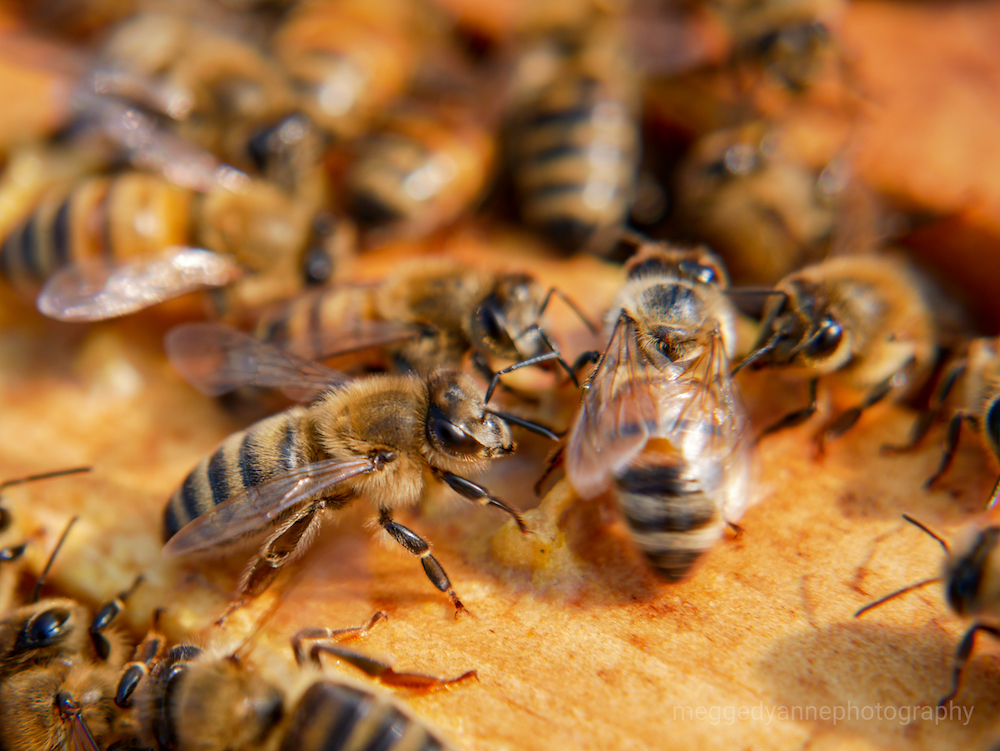Why Honey Bees Dance?

You probably already know that honey bees are amazing creatures. But did you know they are also great dancers? And while they might not excel at the twist, the cha cha or the samba, honey bees have their own dance known as the waggle dance. It’s much more than a way to let loose or show off in front of their friends. In fact, the waggle dance is a way in which honey bees communicate with each other.
The fascinating movements of a honey bee are not random. They are highly orchestrated as a means to help the colony communicate and work together so that they can thrive and survive the winter. In this article, we will learn more about the waggle dance, including what it looks like, why they do it and how it helps the colony survive.
Why do bees communicate?
A colony of honey bees must work together every day for the survival of the whole. One of the main tasks that must be accomplished through teamwork is foraging for food. Worker bees, known as foragers, must go outside the hive in search of nectar and pollen from flowers. They will visit hundreds of flowers in a day. That’s a lot of work!
To make the process more streamlined, they want to make sure that they can collect as much of these vital resources as they can with every trip. When a forger bee finds an area with flowers that are full of pollen and nectar, they want to share the news with the other bees. This is where the waggle dance comes in.
There are other things that happen within the hive that require communication as well. Queen bees release certain pheromones at different points to communicate to her hive members.
How does the waggle dance work?
When a forger bee finds a location for lots of good nectar and pollen, she will perform a special dance in front of the other bees. They will watch her and learn the moves because those moves are done in a specific way to indicate the direction of the food source. In addition to the dance, the bee will pass on the scent of the flower as well as some of the nectar to give them even more information about where to go.
The waggle dance provides information about the distance of the flower and the direction of that flower from the hive. A dancing bee will “waggle run” in a straight line. At a certain point, the bee will circle back to the start and waggle that line again. The length of the line indicates to the other bees about how far the flowers are from the hive. The angle at which they do the waggle run tells the bees the direction from the hive. The bees use the position of the sun to help them communicate the angle.
Why is the waggle dance so important?
Without forager bees collecting nectar and pollen, they wouldn’t be able to produce honey for use as an energy source during the winter time. Bees want to be efficient (like everything else that happens in the hive), so it is important that they find an area full of nectar and pollen-rich flowers. Once they find a goldmine, the waggle dance allows them to communicate its location to the rest of the hive so they can reap the benefits as well.
A bee hive runs like a well-oiled machine, with every worker bee filling a roll to keep the hive running smoothly. As you can imagine, communication is key to their success. In addition to pheromones and other scents, the waggle dance allows honey bees to share information with each other so that they can be most efficient in their work.
San Diego Live Bee Removal Services
If you live in the San Diego area and find a honey bee hive or swarm on your property, your first call should be to one of San Diego’s leading live bee removal companies, D-Tek Live Bee Removal. From the production of honey to the way they communicate, honey bees are endlessly fascinating creatures who need our protection in order to continue to thrive. Instead of ridding your property of honey bees on your own or calling an exterminator who will use harmful chemicals, make the safe and humane choice by choosing live bee removal.
Are you in need of live bee removal services in San Diego? Call D-Tek Live Bee Removal today for a consultation and a quote.
